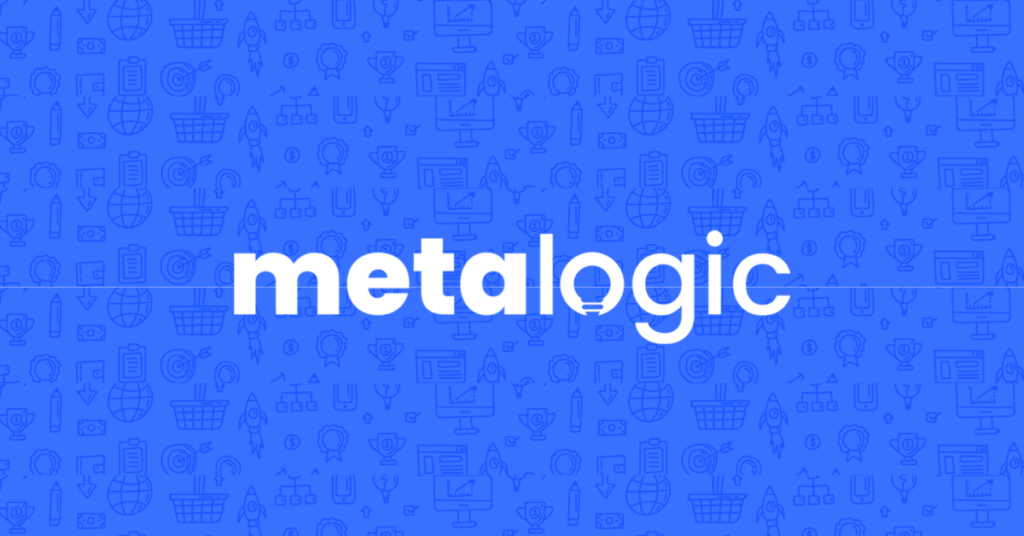The Google Ads Auction Explained

Nick Czerwinski
PPC & Local SEO Specialist
When you use Google to search for something, you’ve likely noticed that ads are often displayed at the top of the search results. Have you ever wondered how those ads get there? It’s all thanks to Google Ads, an advertising platform allowing businesses to display their ads to potential customers searching for relevant keywords.
However, more than just having an ad on Google is required. Your ad needs to be seen by users and, ideally, clicked on by them. That’s where Google Ads auction rankings come in. When someone searches for something on Google, an auction determines which ads will be shown to that user. The ad winning the auction is displayed in the search results, with the top ads appearing above the organic search results.
So, how does Google determine which ads win the auction and get shown to users? It all comes down to the ad rank, which is calculated based on a combination of factors such as bid amount, ad quality, expected impact from ad extensions and formats, and more. In this blog post, we’ll dive into the different components of Google Ads auction rankings to help you understand how it all works and how you can optimize your ads to perform better.
Understanding Ad Rank in Google Ads Auction
Ad Rank is the crucial factor determining the order in which ads are displayed on Google search results pages. It’s a value calculated for each ad every time a search query is made and is based on several factors. Here are the main components of Ad Rank:
Bid Amount
One of the primary factors that determine Ad Rank is your bid amount. This is the maximum amount you’re willing to pay for each click on your ad. The higher your bid, the more likely your ad will appear at the top of the search results. However, it’s important to note that having the highest bid doesn’t guarantee that your ad will be displayed at the top of the search results. Ad quality also plays a significant role in determining Ad Rank.
Ad Quality
The Quality of your ad is another crucial factor contributing to Ad Rank. Google wants to show ads that are relevant and helpful to users, so the Quality of your ad is evaluated based on several factors, including:
Expected click-through rate (CTR): This is the likelihood that your ad will be clicked on when shown to users. Google uses historical data to estimate the CTR for your ad.
Ad relevance refers to how closely your ad matches the user’s search query. Your ad will likely be clicked on if it is highly relevant to the user’s search.
Landing page experience: This refers to the Quality and relevance of the page users are taken to after clicking on your ad. Google wants to ensure users have a good experience after clicking on your ad, so the landing page experience is essential in determining ad quality.
Expected Impact from Ad Extensions and Formats
Finally, Ad Rank also considers the expected impact of ad extensions and formats. Ad extensions are additional pieces of information that you can include with your ads, such as a phone number or a link to a specific page on your website. On the other hand, ad formats are the types of ads you can create, such as responsive search ads, video ads, or shopping ads. The more likely your ad extensions or formats will help improve the performance of your ad, the higher your Ad Rank will be.
In the next section, we’ll dive deeper into one of the critical components of Ad Rank: Quality Score.
Importance of Quality Score in Google Ads Auction
Quality Score is a metric that Google uses to determine the Quality and relevance of your ads and landing pages. It’s an essential component of Ad Rank, as it’s used to evaluate your ads’ expected click-through rate, ad relevance, and landing page experience. This section will examine the factors that makeup Quality Scores.
Expected Click-Through Rate
Expected click-through rate (CTR) is a prediction of how likely it is that your ad will be clicked on when shown to users. Google uses historical data to estimate the expected CTR of your ad based on factors such as your ad’s relevance to the user’s search query, your ad’s position on the page, and your ad’s past performance. The higher your expected CTR, the higher your Quality Score will be.
Ad Relevance
Ad relevance refers to how closely your ad matches the user’s search query. Your ad will likely be clicked on if it is highly relevant to the user’s search. Ad relevance is evaluated based on factors such as the keywords in your ad group, the text in your ad, and the landing page users are taken to after clicking on your ad. The more relevant your ad is to the user’s search query, the higher your Quality Score will be.
Landing Page Experience
Landing page experience evaluates how relevant and valuable your landing page is to users who click on your ad. Google wants to ensure users have a good experience after clicking on your ad, so landing page experience is essential in determining Quality Score. Some evaluated factors include the relevance and originality of the content on your landing page, the ease of navigation, and the page’s load time.
Ad Format and Extensions
Ad format and extensions also play a role in determining Quality Scores. Specific ad formats, such as responsive search and video ads, may be more engaging to users and can improve your ad’s expected click-through rate and relevance. Similarly, ad extensions such as sitelink extensions and call extensions can provide users with more information about your business and improve the relevance of your ad. The more likely your ad format or extensions will enhance the performance of your ad, the higher your Quality Score will be.
Improving your Quality Score can help improve the performance of your ads and lower your cost per click. In the next section, we’ll look at how to bid strategy can impact ad position and performance.
Choosing the Right Bid Strategy for Google Ads Auction
Bid strategy is an essential component of Google Ads auction rankings. It refers to setting and adjusting your bids to achieve specific advertising goals. Here are some of the different bid strategies you can use in Google Ads:
Manual CPC
Manual CPC (cost-per-click) is a bidding strategy that allows you to set your maximum CPC bid for each keyword in your ad group. With this strategy, you have complete control over how much you will pay for each click on your ad. This can be a good option if you have a specific budget and want precise control over your bids.
Enhanced CPC
Enhanced CPC is a bidding strategy that automatically adjusts your manual bids for clicks that seem more likely to lead to a conversion. With this strategy, Google will automatically increase your bid for clicks that are more likely to convert and decrease your bid for clicks that are less likely to convert. This can be an excellent option to maximize your conversions while maintaining some control over your bids.
Target CPA
Target CPA (cost-per-acquisition) is a bidding strategy that sets bids to help you achieve a specific cost-per-conversion goal. With this strategy, you set a target CPA, and Google automatically adjusts your bids to help you reach that goal. This can be a good option if you have a specific cost-per-conversion goal and want to maximize your conversions while staying within your budget.
Target ROAS
Target ROAS (return-on-ad-spend) is a bidding strategy that sets bids to help you achieve a specific return on ad spend goal. With this strategy, you set a target ROAS, and Google automatically adjusts your bids to help you reach that goal. This can be a good option if you have a specific return on ad spend goal and want to maximize your revenue while staying within your budget.
Maximize Clicks
Maximize Clicks is a bidding strategy that automatically sets your bids to help you get as many clicks as possible within your budget. With this strategy, Google will automatically adjust your bids to help you get the most clicks possible while still staying within your budget. This can be a good option if your primary goal is to drive more traffic to your website.
Choosing the right bid strategy for your campaign can help you achieve your advertising goals more effectively. However, it’s essential to keep in mind that bid strategy is just one component of Ad Rank, and factors such as ad quality and landing page experience can also impact the performance of your ads. In the next section, we’ll look at some best practices for optimizing your ads and improving their performance.
Honestly, I consider him part of my Team as well, he really cares about our success. As we grow, he will grow with us. I’m excited about the journey and future with Mike and his Team at Metalogic! If you’re looking at Internet Marketing for your business, simply put he’s the best!

Chris Chustz
Owner, Family First Mortgage
Optimizing Landing Page Experience for Google Ads Auction
Landing page experience is another vital component of Google Ads auction rankings. Landing page experience refers to the Quality and relevance of the landing page users are taken to after clicking on your ad. Here are some best practices for optimizing your landing page experience:
Provide Relevant and Useful Content
Your landing page should provide users with relevant and valuable content that aligns with the messaging in your ad. Use clear and concise language to communicate the value proposition of your business and the products or services you offer. Ensure your landing page’s content is relevant to the keywords you’re targeting and the user’s search query.
Make Your Landing Page Easy to Navigate
Your landing page should be easy to navigate and provide users with a clear path to conversion. Use clear calls to action to encourage users to take the next step, such as filling out a form or purchasing. Make sure your landing page is visually appealing and easy to read.
Optimize Your Landing Page for Speed
Your landing page should load quickly and be optimized for speed. Slow-loading landing pages can lead to a poor user experience and negatively impact your ad performance. Use tools such as Google PageSpeed Insights to identify areas where you can improve your landing page speed.
Ensure Your Landing Page is Mobile-Friendly
With most online traffic coming from mobile devices, ensuring your landing page is optimized for mobile is essential. Use responsive design to ensure your landing page is easy to navigate and read on mobile devices. Use mobile-specific calls-to-action, such as “Tap to Call” or “Get Directions.”
Optimizing your landing page experience can improve your ads relevance and Quality of your ads and increase their performance in Google Ads auctions. Remember to focus on delivering a great user experience and constantly be testing and iterating to find the best approach for your business.
Effective Targeting Strategies in Google Ads Auction
Targeting is a crucial component of a successful Google Ads campaign. By targeting the right audience, you can ensure that your ads reach the people most likely to be interested in your products or services. Here are some best practices for targeting in Google Ads:
Use Audience Targeting
Google Ads provides a variety of audience targeting options that allow you to reach specific user groups based on their interests, behaviors, demographics, and more. Use audience targeting to hone in on the people most likely to be interested in what you have to offer.
Use Keyword Targeting
Keyword targeting allows you to show your ads to users actively searching for keywords related to your business. Use keyword targeting to ensure your ads appear in relevant search results.
Refine Your Targeting Over Time
As you run your Google Ads campaign, keep an eye on your targeting settings and refine them over time based on the performance of your ads. Use data-driven insights to adjust your targeting parameters and reach the most relevant audience possible.
Implementing Successful Bidding Strategies for Google Ads Auction
Bidding is another critical component of a successful Google Ads campaign. Your bidding strategy determines how much you’re willing to pay for clicks on your ads and can impact your ad performance significantly. Here are some best practices for bidding in Google Ads:
Use Automated Bidding
Google Ads offers a variety of automated bidding strategies that use machine learning algorithms to adjust your bids based on the likelihood of a conversion. Use automated bidding to take advantage of Google’s advanced algorithms and maximize your ROI.
Set a Competitive Bid
Setting a competitive bid is essential to ensure that your ads appear in search results top positions. Use tools such as Google’s Keyword Planner to determine the average cost per click for your targeted keywords and set your bids accordingly.
Adjust Your Bids Based on Performance
Monitor the performance of your ads regularly and adjust your bids accordingly. Use data-driven insights to identify opportunities to increase or decrease bids and improve ad performance.
Budget Management
Effective budget management ensures your Google Ads campaign delivers a positive ROI. Here are some best practices for budget management in Google Ads:
Set Realistic Budgets
Set realistic budgets for your Google Ads campaign based on your business goals and your targeted keywords’ estimated cost per click. Use tools such as Google’s Keyword Planner to understand the expected costs for your keywords.
Monitor Your Budgets Regularly
Monitor your budget usage regularly to ensure you’re spending appropriately. Use Google’s budget forecasting tools to understand how much you’ll pay over time and adjust your budgets accordingly.
Adjust Your Budgets Based on Performance
If you see positive results from your Google Ads campaign, consider increasing your budget to capitalize on the momentum. Conversely, if your ads perform better than you’d like, consider decreasing your budgets and reallocating funds to other channels.
By following these best practices for targeting, bidding, and budget management, you can create a comprehensive and effective Google Ads campaign that drives real results for your business.
Best Practices for Ad Optimization in Google Ads Auction
Optimizing your ads can help you improve their performance and increase your ROI. Here are some best practices for optimizing your ads:
Use Relevant Keywords
Using relevant keywords in your ads can help improve their relevance and increase their Quality Score. Ensure to include keywords relevant to your business and the products or services you offer. Use keyword research tools to identify new keywords to target and incorporate them into your ad copy and landing pages.
Create Compelling Ad Copy
Creating compelling ad copy can help grab users’ attention and entice them to click on your ad. Use clear and concise language to communicate the value proposition of your business and the products or services you offer. Use calls-to-action to encourage users to take action, such as “Buy Now” or “Learn More.”
Test Multiple Ad Variations
Testing multiple ad variations can help you identify which ads perform best and make data-driven decisions about optimizing your ads. Test headlines, ad copy, and calls to action to see which variations resonate most with your target audience.
Use Ad Extensions
Ad extensions can provide users with more information about your business and improve the relevance of your ads. Consider using ad extensions such as sitelink, call, and location extensions to give users more context and encourage them to engage with your business.
Monitor Your Ad Performance
Monitoring your ad performance is critical to identifying opportunities for optimization and making data-driven decisions about your advertising strategy. Use tools such as Google Ads reports and Google Analytics to track your ad performance and identify areas where you can improve.
By following these best practices, you can optimize your ads and improve their performance in Google Ads auctions. Remember to focus on delivering a great user experience and constantly be testing and iterating to find the best approach for your business.
Custom Marketing Plans Starting at $500 / month
Conclusion
Google Ads is a powerful tool for reaching new customers and driving business growth. By understanding the components of Google Ads auction rankings, optimizing your ads for ad relevance, expected click-through rate, landing page experience, and ad format, and targeting the right audience with the right bids, you can maximize the performance of your Google Ads campaigns.
Remember to continually test and iterate your ads to find the best approach for your business. Use data-driven insights to make informed decisions about your advertising strategy, refine your targeting parameters and bidding strategies over time, and adjust your budgets accordingly.
Also, keep in mind that Google Ads is just one component of a comprehensive digital marketing strategy. Consider integrating Google Ads with other channels, such as social media, email marketing, and search engine optimization (SEO), to create a holistic approach that maximizes your reach and impact.
By following these best practices and keeping these final thoughts in mind, you can create a successful and impactful Google Ads campaign that drives real results for your business. Good luck!
Become A Google Ads Specialist With MetaLOGIC's Local Digital Marketing Academy
Get your business in front of the right people with Google Ads. From display and search campaigns to Shopping and video campaigns, there’s a way to reach your target audience on the Google Ads platform. Don’t wait to see results – CLearn more about our Google Ads Online Training Course.








